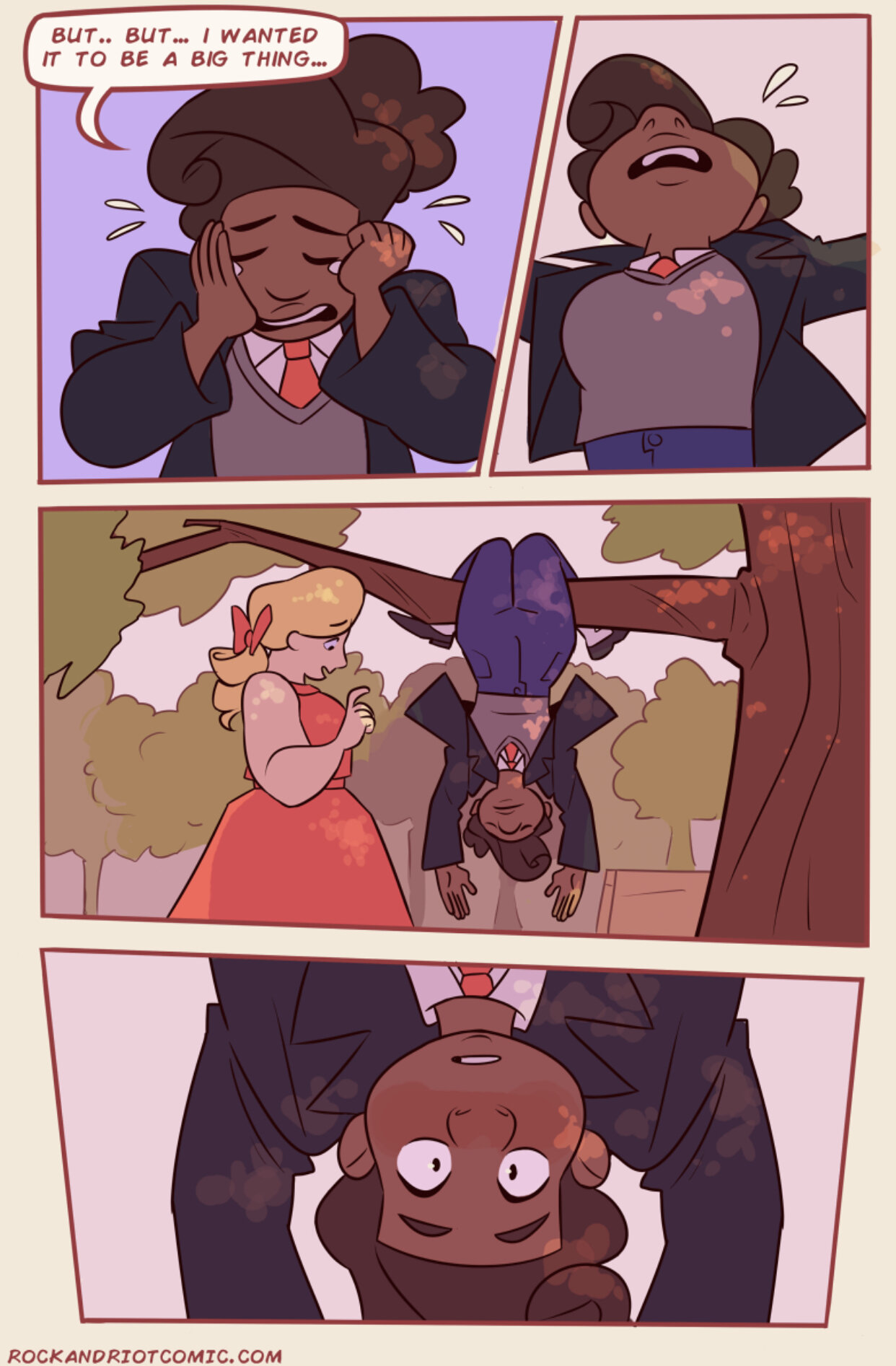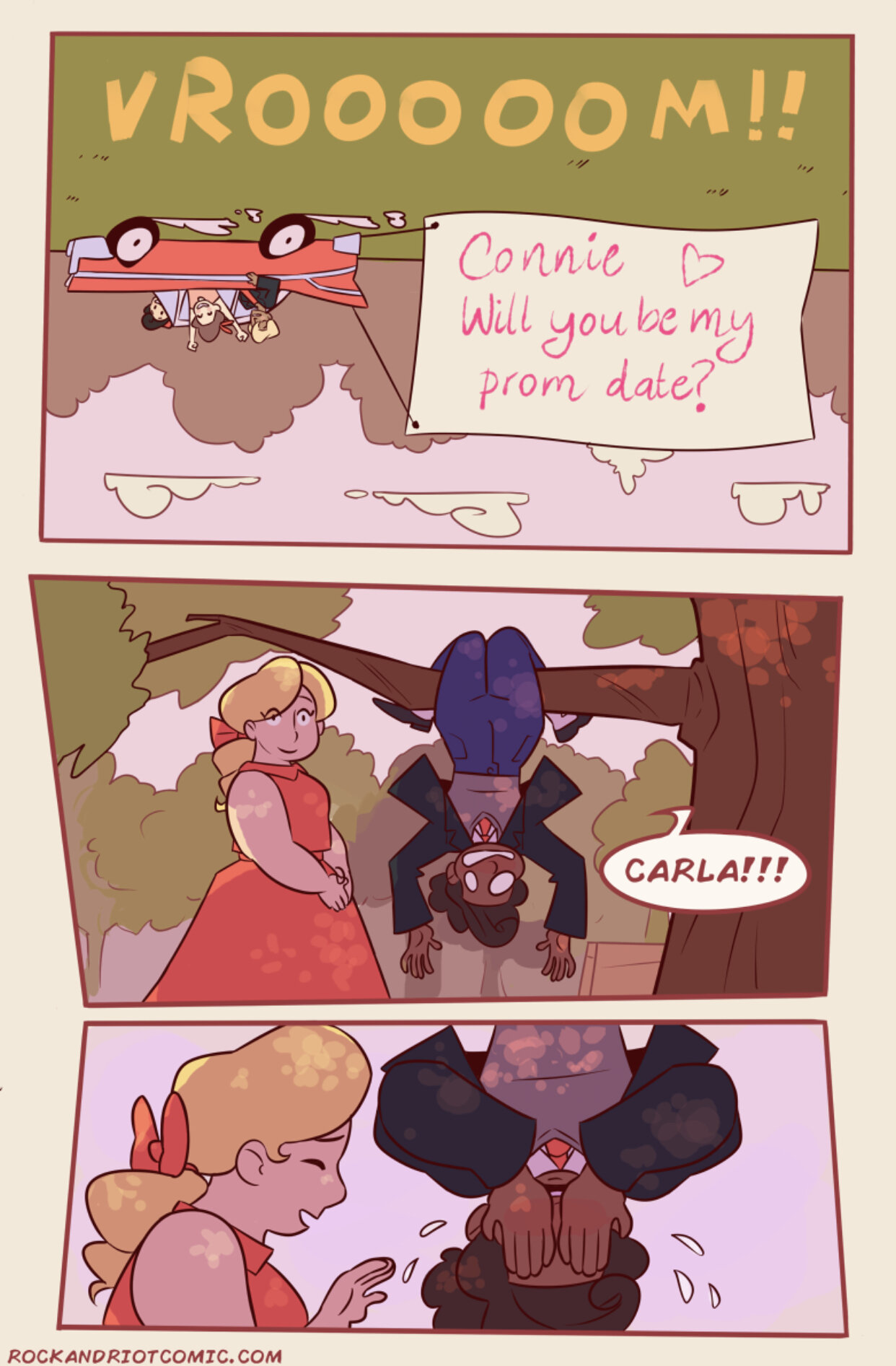Rock and Riot, written by Chelsey Furedi, is the story of two rival gangs: the Rollers and the Jaquettes. Feuding ever since they were kids, tensions started rising even higher after Rolly decided to leave the rowdy, narrow-minded Rollers for the more welcoming Jaquettes after she transitioned. Shortly after, Rolly draws the attention of Ace, founder of the Bandits, but their relationship isn’t the only one that’s been hiding in the shadows. It turns out the Rollers and the Jaquettes have a lot more in common than they thought.
How are comics more effective at capturing and depicting moments than other forms of storytelling?
Even though comics are widely believed to be a product of the 20th century, the medium of sequential art can be traced back to much earlier than that. For instance, one of the most well-known and preserved examples of separate images used to tell a continuous story is the Bayeux Tapestry, depicting the events of the Norman Conquest in 1066. Why was this medium used as opposed to theater or writing? A first possible reason could be accessibility. As very few people could actually read in the Middle Ages, writing as a means of mass communication wasn’t possible. Pictures proved more effective to transmit history. A second possible reason could be succinctness. With a political event such as the Norman Conquest, the story must be simplified to its most relevant beats. By depicting each significant moment in separate pictures, the matter at hand would be easier to understand. Basically, sequential art is the ideal medium to communicate through snapshots.
Credit: Chelsey Furedi
A four-panel page.
First panel: Connie is crying with her hands on her face.
Connie: But… But… I wanted it to be a big thing…
Second panel: Connie is falling backwards, arms outstretched.
Third panel: Connie is hanging upside down on a tree branch. Carla is by her side, looking amused.
Fourth panel: A close-up of upside-down Connie, her eyes wide open, surprised.
Credit: Chelsey Furedi
A three-panel page.
First panel: An upside-down view of the Jaquettes driving pass, flying a sign that reads: “Connie, will you be my prom date?” The sign is flown upside-down so it reads right-side up.
Second panel: Connie, still hanging from the tree, is absolutely stunned. Carla is looking pleased with her plan.
Connie: Carla!!!
Third panel: Connie is crying, completely hiding her face with her hands. Carla is reaching out to her to console her, amused.
The realm of visual art, such as painting and sculpture, concerns itself with capturing the moment. Since life is just an unbroken series of events, visual artists have striven to capture the smallest fractions of time for posterity. Other art mediums do this in their own way but cannot achieve the same result. With writing, an author can describe an event on paper to be read time and time again. However, the describing the richness of detail of life through writing can be a hopeless task as the rabbit hole is deeper than it seems at first. Similarly, through theater, actors can perform an event over and over, but just as in real life, it is quickly replaced by the next action. The moment cannot be frozen on the stage. Herein lies the strength of sequential art as a medium. Like the other visual arts, it can capture significant moments in time, and it can also organize these moments in a way that engages the reader and highlights their importance.
Credit: Chelsey Furedi
A four-panel page.
First panel: Clyde is shirtless, leaning on a car, hands in his pocket, happily talking to Gene who is underneath the car.
Clyde: Maybe look at what’s on the paper!
Gene (off-panel): I’m not wearing my glasses.
Second panel: Clyde facepalms.
Third panel: A close-up of Clyde’s hand passing Gene’s glasses to him.
Fourth panel: A close-up of Clyde, bashful and blushing.
Gene (off-panel): … OH…
Clyde: I don’t even know if we can go to prom together, but, I still wanted to ask.
How does this all tie in with a comic like Rock and Riot? Because comics are the perfect medium for a story like it. Consider the high school setting; there’s a reason why it’s such a popular setting for stories. Adolescence overall is a time of countless significant moments, both positive and negative. Triumphs and failures, love and heartbreak, self-discovery… it’s safe to say that everyone experiences these to varying degrees during this time. Now, add the queerness factor, and suddenly these teens have a lot more moments to capture: questioning, coming-out, fear of rejection or, in the case of the featured panels, moments of wholehearted tenderness and affection that they once thought impossible. Unlike other media, comics allow readers to follow the beats of the emotional journeys and to linger on the reactions and speech as comics allow both to happen simultaneously in each panel, fully immersing the readers in each moment.


